
Underwater Photographer and marine biologist Bella Zandoná shares her experience diving the wreck of Hilma Hooker, off the Dutch Caribbean island of Bonaire
Words and pictures by Bella Zandoná
The dive begins with a quiet swim through Bonaire’s blue waters. At first, it’s a beautiful sandy terrain with scattered coral heads opening up into a thriving reef, which is nothing unusual for Bonaire’s dive sites.
Almost suddenly, a shadow forms in front of you: flat, dark, and massive. At first, it looks like a wall rising out of nowhere. Then your brain catches up … it’s the hull of a ship.
The wreck of Hilma Hooker seems to appear all at once, a 236-foot (72 metre) cargo vessel lying on her side, and even after several dives around the wreck, I still get the same emotional rush when it comes into view.
There’s something about diving a wreck that feels different from any other type of diving. While coral reefs grow over centuries, each one a slow masterpiece built by thousands of tiny animals, a wreck is sudden.
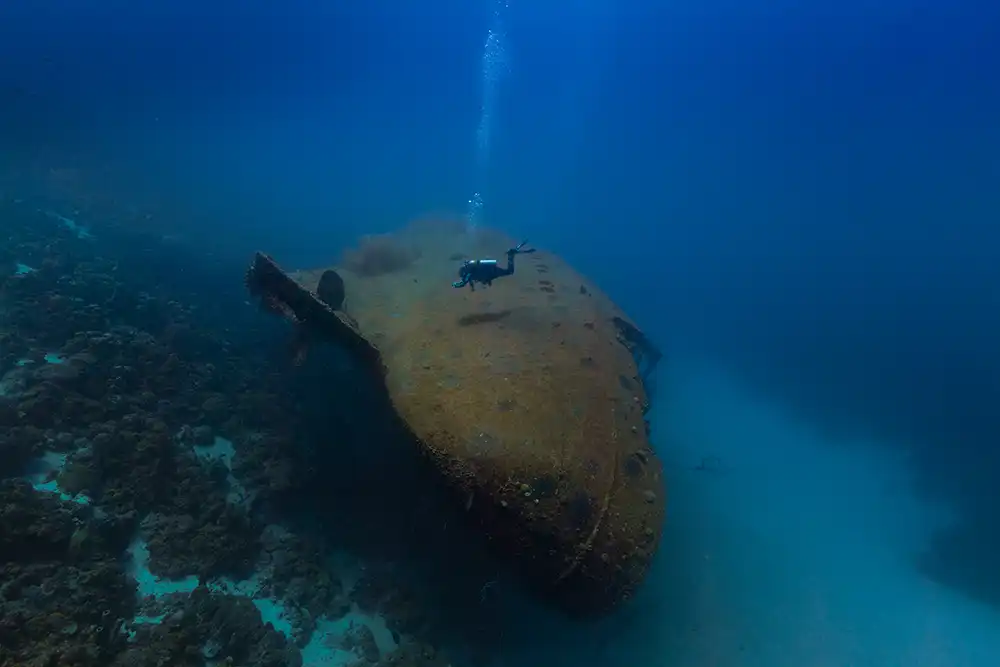
It’s an entire structure that doesn’t belong, doing the exact opposite of what a boat is built to do, being claimed by the ocean and transformed into a reef.
Hilma Hooker is a perfect example of that transformation. She was built to haul cargo, seized while smuggling marijuana, and now she’s one of Bonaire’s most famous dive sites, a place where human history and marine life come together.
Hilma Hooker’s demise
Hilma Hooker’s history is a wild one. Launched in the Netherlands in May 1951 under the name Midlsand, she spent three decades carrying goods under six different names and seven different owners.
She almost sank in 1975 after running aground in The Bahamas, and was set to be sold for scrap, but was purchased by a Panamanian shipping company.
She would change hands again in 1976, before being sold to her final owner, the Colombian San Andrés Shipping Line, in 1979.
Related articles
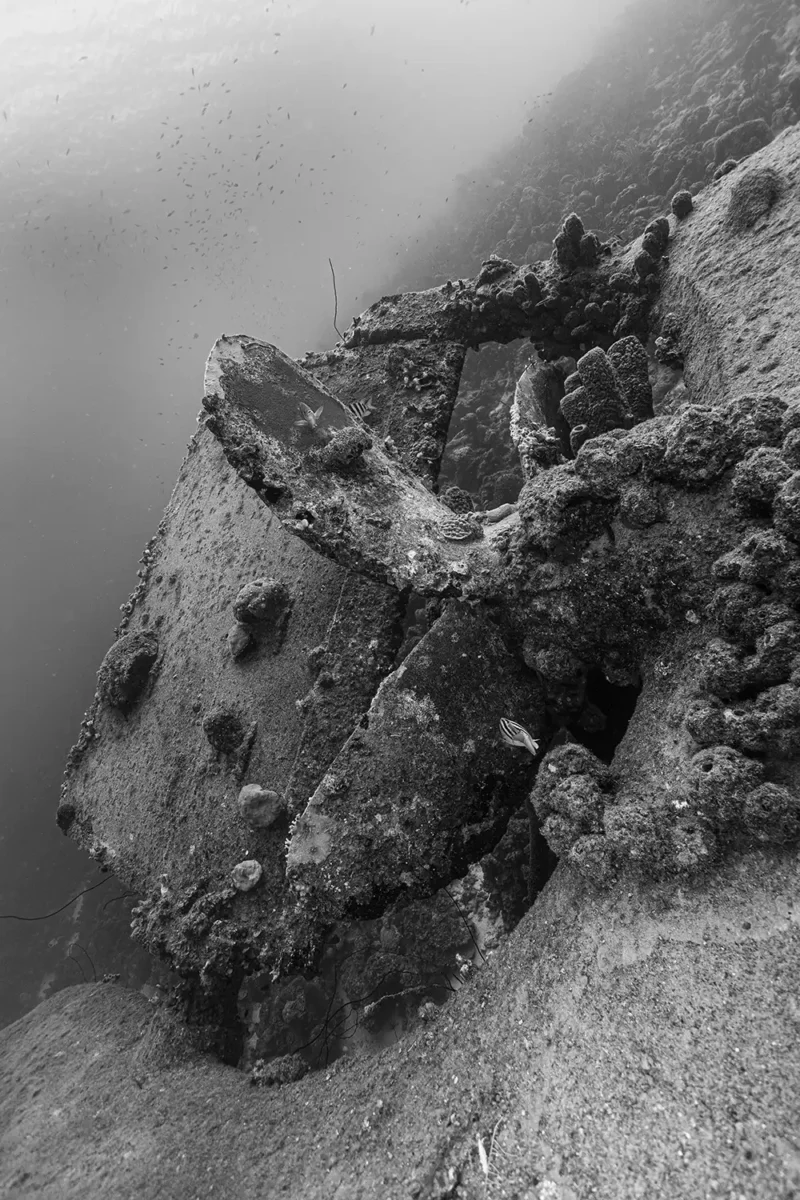
Her most infamous chapter began in 1984, when she was towed to the port of Kralendijk in Bonaire after suffering mechanical problems with her engine.
Local authorities boarded the ship for an inspection, but the captain was unable to provide any of the required registration papers, so he and his crew were detained.
Upon further investigation, 25,000 pounds (11,000 kg) of marijuana was discovered hidden behind a false bulkhead. For weeks after the ship sat in limbo, no owner stepping forward.
Eventually, due to the lack of maintenance, Hilma Hooker began to take on water. Fearing the ship would sink and block access to the docks, she was towed out to sea on 7 September 1984.
According to locals, she began listing more and more as the days went by, until on September 12, 1984, she began taking on water through her portholes, which sealed her fate.
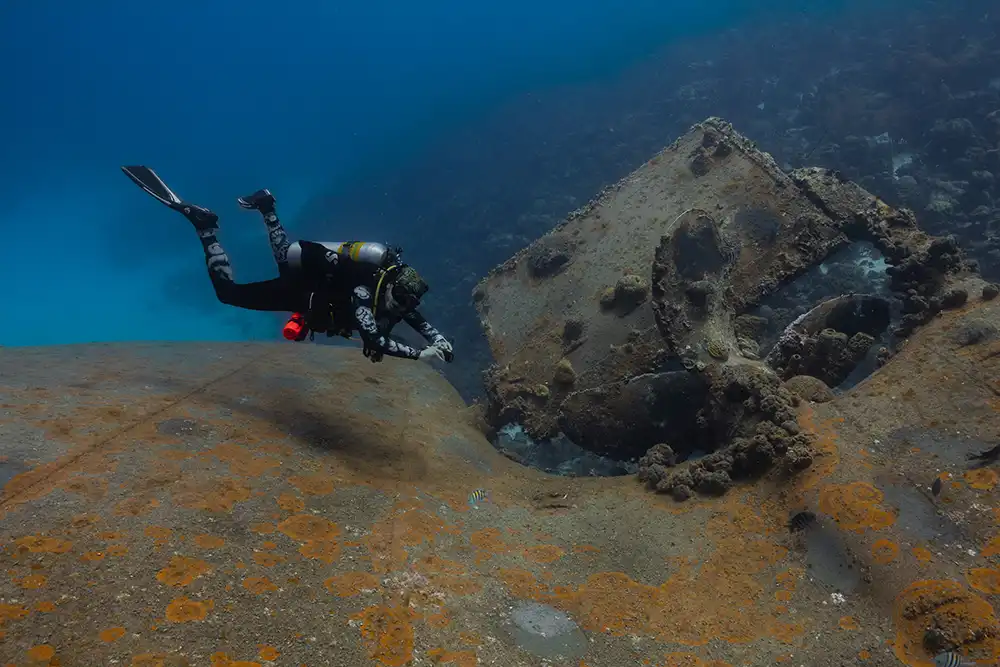
At 9:08 am, Hilma Hooker rolled over onto her starboard side and took only two minutes to sink beneath the waves. She came to rest between two reef systems on the southern leeward coast of Bonaire, known as dive site 43, resting on her starboard side at a depth of about 100 feet (30 meters).
Diving the Hilma Hooker’s wreck
Today, Hilma Hooker is more than just a wreck. She’s an artificial reef, teeming with marine life. For many divers, myself included, she holds a special place in their diving journey.
I earned my wreck diving certification learning to navigate around her corridors and massive hull. There is something both eerie and exciting about exploring a ship that once smuggled drugs but now serves as a home to Bonaire’s marine life.
The first thing you notice about the wreck is its size. Since she rests on her side, the entire profile is dramatic.
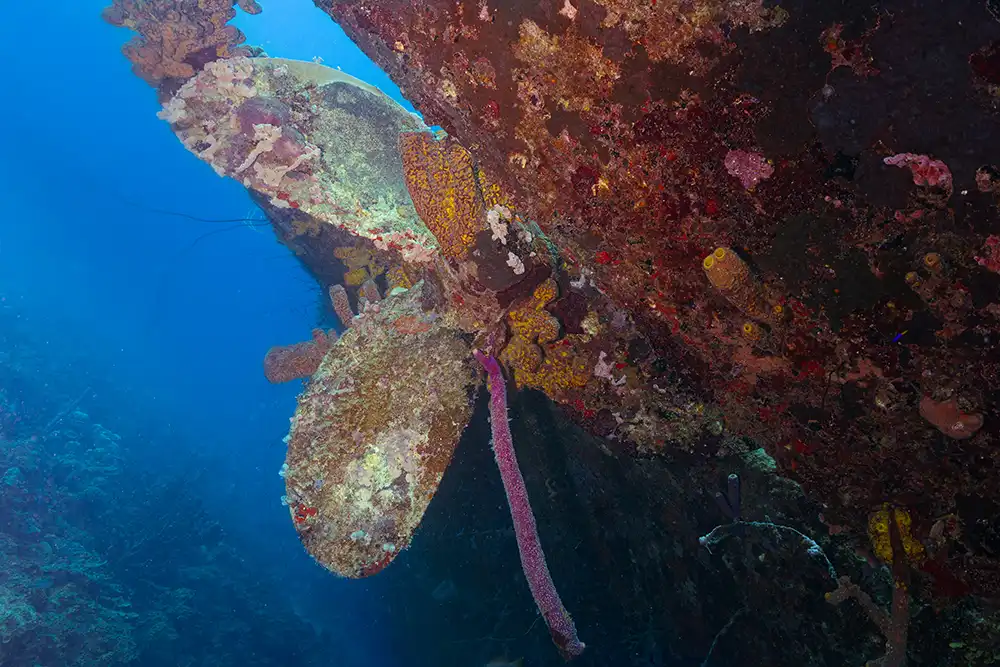
The deck faces toward the open ocean, while the keel rises up like a wall. The bow and stern are easy to recognise, and you can swim the length of the wreck (240 ft/72 m) in a single dive. But in my opinion, you need several dives to really appreciate all her details.
As you get closer, the wreck starts to reveal textures. Coral has colonised the steel; sponges and sea fans cling to every surface.
Schools of fish, barracuda, and massive tarpon patrol the wreck, and the occasional seahorse hides in the growth along the rails.
Look a little closer, and the smaller residents appear. Blennies peeking from holes in the coral, Christmas tree worms retreating at any movement, and eels weaving through cracks in the hull.
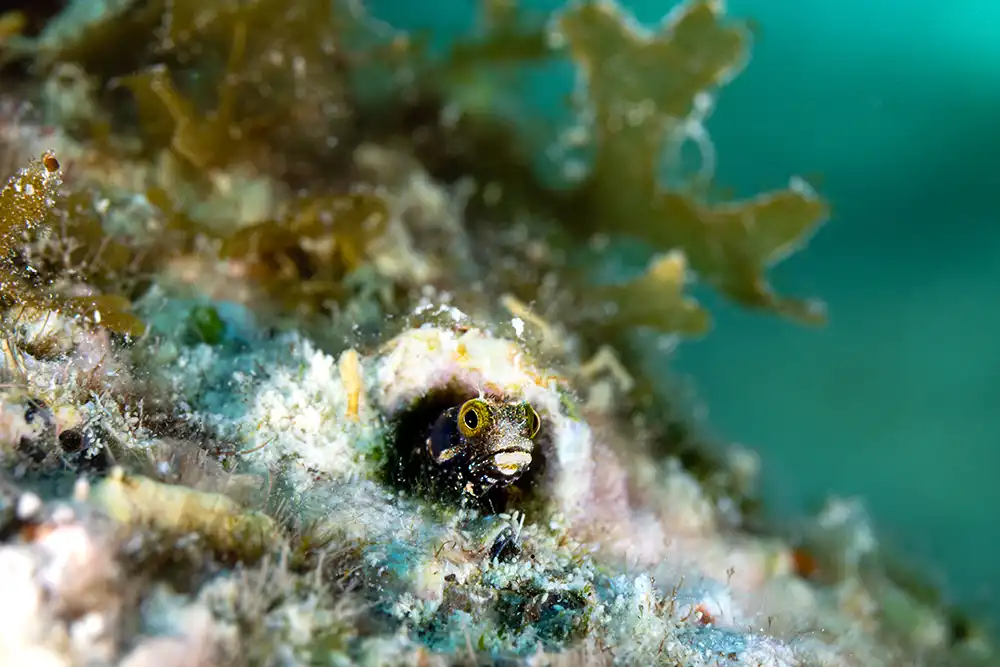
One of the most striking sights around the wreck are the lobsters hiding underneath it. Some of them grow to truly enormous sizes, practically monsters, tucked into the nooks and crannies along the hull.
For me, photographing Hilma Hooker was both a challenge and a reward. Wide-angle photography is the best way to capture the scale of the wreck, but it comes with its own set of hurdles.
At 100ft below the surface, the wreck’s depth means that the reds and oranges are mostly gone by the time you reach it.
Visibility can vary and light is limited, so you need to play around with strong strobes or the careful use of natural light to bring out colour and contrast.

Backscatter is a problem for super-wide shots, so I position myself to take advantage of whatever sunlight is reaching the wreck. I try to balance depth, angle, and light to make the scene feel both dramatic but still true to life.
Shooting at this site forces you to think carefully about composition, lighting, and colour all together – which is part of what makes Hilma Hooker such a rewarding subject.
I shoot with a Canon R6, usually paired with a 15-30mm wide-angle lens for wrecks like this. To capture the ship’s size, I frame my dive buddy in many of my shots, giving perspective and scale. Without a diver, it can be hard to communicate just how massive the wreck really is.
Since the wreck rests at an angle, you can play with perspective and differing angles, but of course, plan ahead, since at that depth, every minute counts.

Bonaire is full of incredible dive sites. From reefs to piers – but the Hilma Hooker stands out because it combines so many elements at once. There’s the drama of the descent and that first glimpse of the ship.
There’s the backstory, full of smugglers and scandal. There’s the sheer variety of marine life, from giant tarpon to tiny sea horses. And for photographers, there’s the challenge of capturing a subject that’s both massive and intricate at the same time.
This dive site is a story told in steel, drama and marine life that embodies the way human history and ocean ecosystems can collide in spectacular fashion.
For divers, Hilma Hooker offers adventure, challenges and beauty – an experience that stays with you long after you surface.
Isabella Zandoná is a marine biologist and underwater photographer born in São Paulo, Brazil, and now based in Seattle. You can find a portfolio of her work in DIVE’s Featured Photographers section, and on Instagram @divingwithbella


